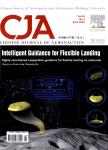版权所有:内蒙古大学图书馆 技术提供:维普资讯• 智图
内蒙古自治区呼和浩特市赛罕区大学西街235号 邮编: 010021

作者机构:School of Automation Science and Electrical Engineering Beihang University Science and Technology on Aircraft Control Laboratory High-Tech Institute of Xi'an
出 版 物:《Chinese Journal of Aeronautics》 (中国航空学报(英文版))
年 卷 期:2013年第26卷第3期
页 面:646-660页
核心收录:
学科分类:08[工学] 082503[工学-航空宇航制造工程] 0825[工学-航空宇航科学与技术]
基 金:the National Natural Science Foundation of China(No.60904066)
主 题:Adaptive Bi-level programming Motion planning Unmanned aerial vehicles Variable time interval
摘 要:This paper presents an adaptive path planner for unmanned aerial vehicles (UAVs) to adapt a real-time path search procedure to variations and fluctuations of UAVs’ relevant performances, with respect to sensory capability, maneuverability, and flight velocity limit. On the basis of a novel adaptability-involved problem statement, bi-level programming (BLP) and variable planning step techniques are introduced to model the necessary path planning components and then an adaptive path planner is developed for the purpose of adaptation and optimization. Additionally, both probabilistic-risk-based obstacle avoidance and performance limits are described as path search constraints to guarantee path safety and navigability. A discrete-search-based path planning solution, embedded with four optimization strategies, is especially designed for the planner to efficiently generate optimal flight paths in complex operational spaces, within which different surface-to-air missiles (SAMs) are deployed. Simulation results in challenging and stochastic scenarios firstly demonstrate the effectiveness and efficiency of the proposed planner, and then verify its great adaptability and relative stability when planning optimal paths for a UAV with changing or fluctuating performances.